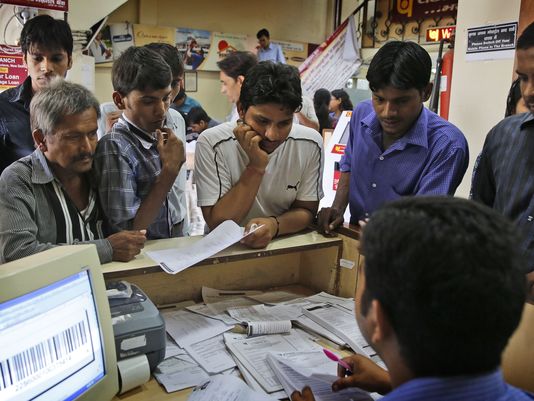
Following the government’s rigorous efforts to ensure one bank account for every household across the country, India has seen a robust growth in the number of new account ownership. In mid-January this year, the number of new accounts opened under the largest-ever financial inclusion drive, Pradhan Mantri Jan-Dhan Yojana (PMJDY), got India a place in the Guinness Book of World Records for opening over 11.5 crore bank accounts in a record time.
Findings of the World Bank-Gallup Global Findex Survey 2014 suggest that in India, bank account penetration increased from 35 per cent to 53 per cent during 2011 and 2014, while in China, bank account penetration increased from 64 per cent to 79 per cent. In terms of absolute numbers, this growth translated into 180 million adults in China and 175 million in India becoming account holders – with the two countries together accounting for about half the 700 million new account holders globally.
The challenge for policy makers, though, is the fact that opening of accounts does not necessarily mean that they are used. Globally, 15 per cent of adults with an account at a financial institution – representing about 460 million people – reported making no deposit or withdrawal in the past 12 months and therefore have what can be considered a dormant account. This means that their accounts not only had no cash deposits or withdrawals, but also that it had no electronic wage deposits and no electronic payments or purchases.
The dormancy rate in South Asia is especially high at 42 per cent; the average across all other developing regions is less than 20 per cent. India, with a dormancy rate of 43 per cent, accounts for about 195 million of the 460 million adults with a dormant account around the world. In high-income OECD economies, the dormancy rate is 5 per cent.
“We need to bring more of the hitherto excluded to participate in the financial system. The Prime Minister’s Jan-Dhan Yojana has created accounts for much of the excluded population. The government has taken the next step of attaching a variety of financial services, such as accident and life insurance to these accounts, and sending direct benefits such as scholarships, pensions, and subsidies to these accounts … Easy payments, access to cash-in and cash-out facilities, and widespread availability of safe savings instruments have to be our next objectives in the financial inclusion of households,” RBI Governor Raghuram Rajan had stated in a September 18 address at the Fourth CK Prahalad Memorial Lecture.
While in some economies, high dormancy might reflect the relatively greater convenience and lower cost of using alternative payment solutions, in economies such as India, the high dormancy largely reflect a large number of newly opened accounts that have not yet been used. In countries such as Tanzania, 37 per cent of adults with an account at a financial institution reported having made no deposit or withdrawal in the past year, 62 per cent of this group reported having made financial transactions using a mobile phone over that period.
Elets The Banking and Finance Post Magazine has carved out a niche for itself in the crowded market with exclusive & unique content. Get in-depth insights on trend-setting innovations & transformation in the BFSI sector. Best offers for Print + Digital issues! Subscribe here➔ www.eletsonline.com/subscription/



















